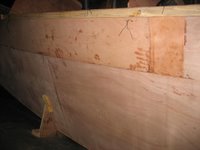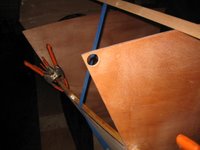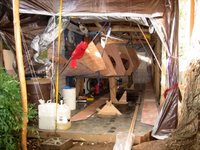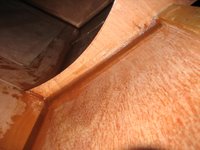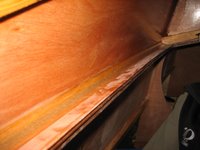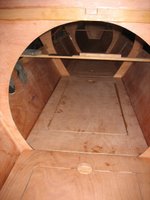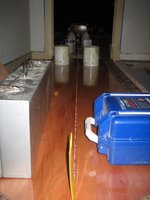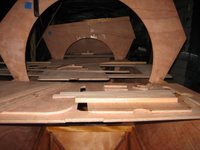
I've been getting some great comments. I really appreciate the feedback and opportunity to discuss Wharram's boats with others. Don't be shy send me your thoughts on what I'm doing, questions you may have or ideas on how to go about the whole process. One question I keep getting is how did I arrive on the decision to build the T26. Below is the text from an email I got (made anonymous) and email reply I sent back with a little editing and completing.
> Hi Thomas,
>
> My name is D___ and I live in G________, WA>
> I just wanted to say thanks for making the effort to
> share your
> building experiences with the rest of the world.
>
> I am thinking about building a Tiki26 or 30 and am
> finding your blog
> very useful. I can't seem to find many Wharrams on
> the west coast of
> Australia. They seem to be over on the east coast or
> up in the
> northern part of Australia. So for the mean time I'm
> just looking at
> as many pics on the net to try and get a feel for
> sizing etc.
>
> I got the design book a couple of weeks ago and will
> probably get the
> tiki26 and tiki30 study plan soon. I'm pretty sure
> that one of these
> will be for me, it would be nice to actually see one
> first hand
> though!
>
> Well I better not keep you for long, you've got a
> boat to build!
My reply
It sounds like you are much in the same boat I was
when I was trying to decide! No Wharram's to look at locally.
I wrote to Wharram, who sent me a list
of folks who had built them on the west coast of N.
America. Nothing was very recent nor could I find any of these folks. So I did the same, I
relied on the web. I think the choice of boat is very
personal and really depends upon how, where and with
how many others you plan to use it. I use to have a
19 foot kayak Pygmy Queen Charlotte
(www.pygmyboats.com) so I had an idea of what it would
be like to sail a T21 - too small for my purposes. I ended up ordering 2 sets of
study plans Pahi 31 and Tiki 26. I still have those
plans taped to the wall beside my bed (I'm lucky to
have a tolerant wife) and I drew full size mid-hull
cross sections of both boats on a wall in the house.
I've spent many days staring at these and contemplating
which way to go. For awhile I thought of buying a P31 for sale in Germany.
Then the T38 for sale in the
Philippines caught my eye. In the end my decision was
based on my love of kayaking and sailing - I wanted
something that moved fast but had me close to the
water. I also didn't want to have a great huge amount of money wrapped up in a boat so I'd be worrying about that. A trip I took in a 13 foot inflatable two
summers ago made me realize what kind of sailing I wanted to do.
The trip was a 900 nautical mile circumnavigation of Vancouver
Island.
I have sailed around Vancouver Is. Several times but to be
able to go into all the nooks and crannys that I
didn't dare approach in my keel boat, my Westsail 28,
was amazing. So what I ended up wanting was a boat I
could beach, something I could sleep inside of if it
was foul, just enough room to sit up but no more (the
Pahi like Wharram comment responds to some peoples need for a regular boat
with sinks, built in stove and a head). I wanted it to feel like I
was kayak mountaineering, not yachting. I also wanted it to be small
enough (think cost to build) that I could leave it in
a remote anchorage to go mountaineering and the likes
and not worry about it. I never looked at the T30 much so
I can't speak to that. Except it looks more time consuming to build weighs 750 pounds more empty and takes 100 square feet more sail. For 2 more inches of head room over the bunks and 3" of additional hull width. Also in the USA customs charges boats over 28 feet for clearance but not below that length.
All I see you get is skinny
double bunks and a little more head room. I think
your dilemma is a common one, others have written to me
about the same thing. One other factor on my part was
I didn't want building to take forever as I want to go sailing not go on building. It had to take under a year.
I've built small boats before and I knew from those
experiences that it takes for ever to do. I've also
seen too many self-built boat projects fizzle out. All
this aside, my backyard really is only big enough for a
26 foot boat!
I think you should think hard about exactly how you
plan on using your boat. I'm 6 feet tall and about
160 pounds on a heavy day. When I first lofted up the
hull cross section of the T26 on the wall I thought it
might be a little tight in the bunks. Now that I've
had a chance to lie in them, even the smaller stern
bunks are big enough.
Good luck with your decision and stay in touch. I'm
interested in others building experiences and how my
blog is affecting their decisions helping them on
their way.
Cheers,
Thomas
FYI: my old profile picture was of me in my Queen Charlotte 19 is posted here again for human size comparison. It was long for a single kayak. To give you an idea of how much stuff you can pack in a boat like a Tiki 21 or 26 if you like the camping idea, I was able to haul six plus week food and gear in my QC 19. It was cold rainy weather most of the time so I ate a great deal to keep going. My feeling is if you are worried that the T26 can't carry all your stuff, think again.
I switched out my profile picture to one of me ripping it up on my tele boards as it's starting to snow so I have skiing on the brain.







